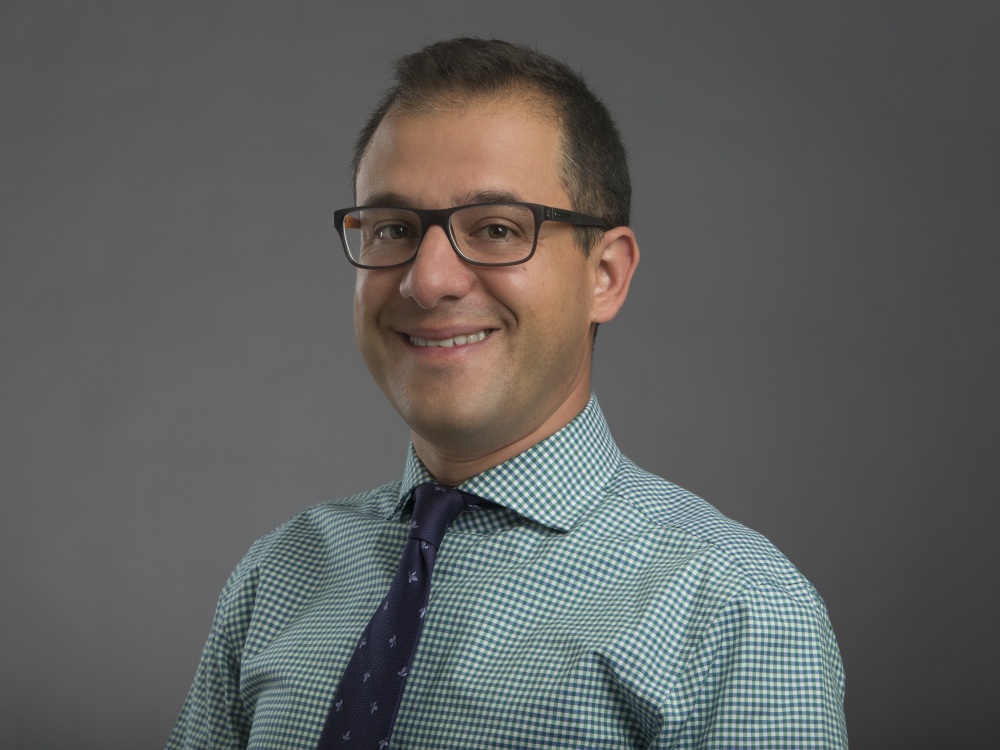Kaneka’s LIPOSORBER® LA-15 System is a blood processing machine used outside of the body. This LDL apheresis device removes certain lipoproteins (cholesterol) from the blood. It’s used for pediatric and adult patients diagnosed with primary Focal Segmental Glomerulosclerosis (FSGS) either before transplant or who experienced FSGS recurrence after transplant.

Several doctors across the country have been treating patients with the LIPOSORBER®, including Dr. Joshua Zaritsky, a pediatric nephrologist, and Dr. Vasil Peev, an adult nephrologist. We asked both doctors to share their experience with the LIPOSORBER® system and recommendations for patients considering this treatment option.
What is your experience with LDL apheresis, and what kind of patients do you treat?
ZARITSKY: I’ve had experience with LDL apheresis over the last six years. There are two classes of patients I treat. One is patients who have had a renal transplant and have had recurrence — they’re probably the most common patients I treat. The other group of patients are those who have FSGS or another sort of steroid-resistant nephrotic syndrome. Those patients haven’t yet undergone transplantation.
PEEV: I’ve treated two patients so far with LDL apheresis who have had recurrent FSGS and are post-transplant.
What has the patient’s response been to the treatment?
ZARITSKY: I’ve had very good luck with those patients who have had recurrence after transplant. We actually published that data; we had seven back-to-back cases that were 100% successful. Since then, we’ve had some failures to treatment, but we’ve had very good luck post-transplant. In the pre-transplant area, we see response rates anywhere from 30-50%. But that being said, we’ve had some incredible responses. Other centers were about to take out both patients’ kidneys, and we’ve been able to rescue them and put them into remission.

PEEV: Both patients have had an outstanding response to LDL apheresis. One of them had recurrenceafter receiving a living-donor kidney from his mother. He’s now almost three years post-transplant with very stable renal function and no proteinuria. I just saw this patient recently and he’s doing fantastic! His kidney function remains somewhat impaired as his LDL apheresis treatment was initially delayed leading to some progression of CKD from recurrent FSGS after his transplant. When treating him after transplant, I initially gave him what is considered to be standard of care, i.e. plasmapheresis (and various other medications). He unfortunately failed these despite very aggressive and numerous efforts to control his proteinuria. The LDL apheresis was basically a Hail Mary treatment that really saved his kidney and kept him off dialysis.
Are patients comfortable during the treatment?
ZARITSKY: What I’ve noticed as a doctor is that this is very well-tolerated treatment. There’s not a lot of side effects. For the most part in my clinical experience, there hasn’t been a lot of side effects.
PEEV: From what I’ve heard patients say, it’s very comfortable and much smoother than dialysis treatment. The blood flows are much lower (50-100 CCs per hour). The treatments last for few hours and are very well tolerated. Patients don’t feel drained, which is something that’s frequently described with dialysis.
What is your recommendation for other nephrologists?
ZARITSKY: I think it’s important to reach out to other physicians who have some experience using the equipment, because we can also put our nurses in touch with their nurses who have experience. There’s some tricks and tips that we’re willing to share and, for the most part, it’s a nice community of doctors who are always willing to help out.
PEEV: I think that it’s definitely worth a try. Again, in the field of nephrology, unfortunately, we still are working with a handful of very old, adopted drugs from other medical specialties — mainly from oncology. I would convey the message to other nephrologists that the complication rates with this device are zero to none.
Although it may require initially some efforts by the nephrologists to get patients treated with the LIPOSORBER® device (in terms of getting access to the device), these efforts will likely be eventually rewarded.
In general, I think we should not spend much time with the other treatments if we see that they are not working or failing. Doctors should consider embarking on this treatment modality rather sooner, as sooner they expose their patients on this treatment (before more significant damage is done to the kidney), more likely the patients will have a good response.
How early do you suggest starting the treatment?
ZARITSKY: FSGS is one of these diseases that can aggressively decrease kidney function, and once that kidney function is gone, there’s no getting it back. The LIPOSORBER® is really one of these treatments that after patients have tried other treatment modalities, you want to treat them as soon as possible.
PEEV: Ideally within the first 8-12 weeks after presentation. If you see the patients not responding to first-line therapies in 8-10 weeks following the initial presentation with recurrent FSGS, I would recommend initiating this treatment as soon as possible. When left untreated this condition is frequently associated with allograft loss, despite the best efforts of the transplant team.
For more information about Kaneka’s LIPOSORBER® Trial, click here and here.